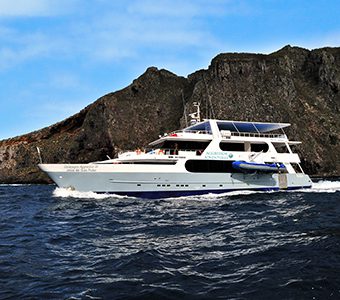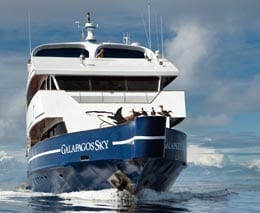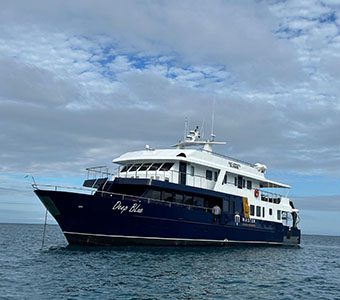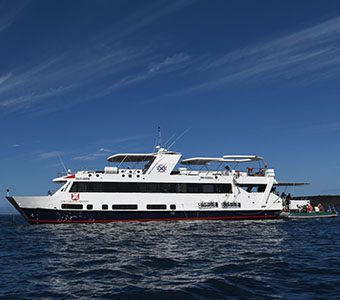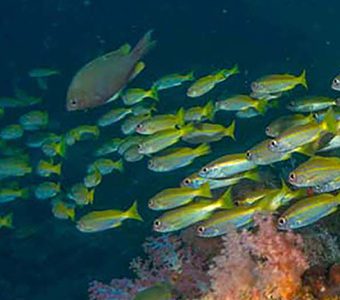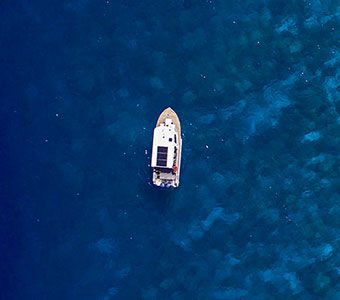Diving the Galapagos Islands, you will encounter an incredible array of marine life. This remote volcanic archipelago is considered one of the world’s foremost destinations for wildlife-viewing, above and below water.
Its isolated terrain shelters a diversity of plant and animal species, many found nowhere else. Charles Darwin visited in 1835, and his observation of Galápagos’ species later inspired his theory of evolution.
There are fantastic dives on many of the islands, though several islands are stand outs, including Darwin Island where there are often huge schools of pelagic species including hammerhead and Galapagos sharks as well as some whimsical geologic formations. El Arco is renowned as one of the best dives in the world.
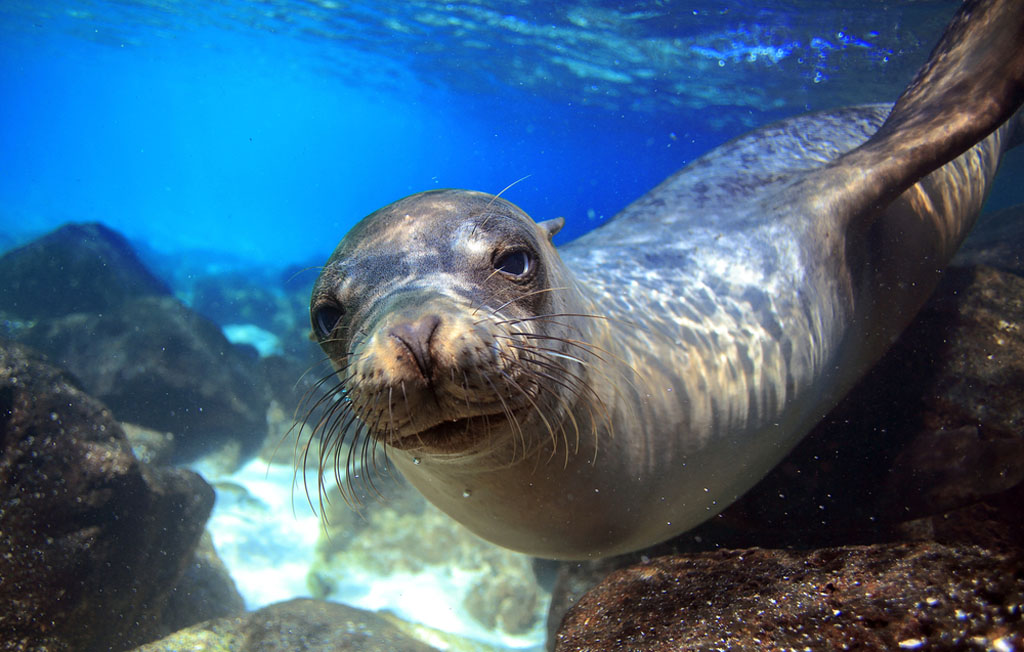
On Isabela Island you can swim with sea lions and penguins and at Roca Redonda, sharks teem around an underwater volcano. Santa Cruz Island boasts a flamingo lagoon, beautiful mangrove forest, the Charles Darwin Research Station and is also the best place to see giant Galapagos tortoises.
The endemic wildlife here is spectacular, and are completely contained within this detached location. You can expect to see marine iguanas, fur seals, and penguins during a dive, as well as manta rays and tunas. Galapagos is one of the best places on the globe to dive with Hammerhead sharks, who will visit the island in impressive droves.
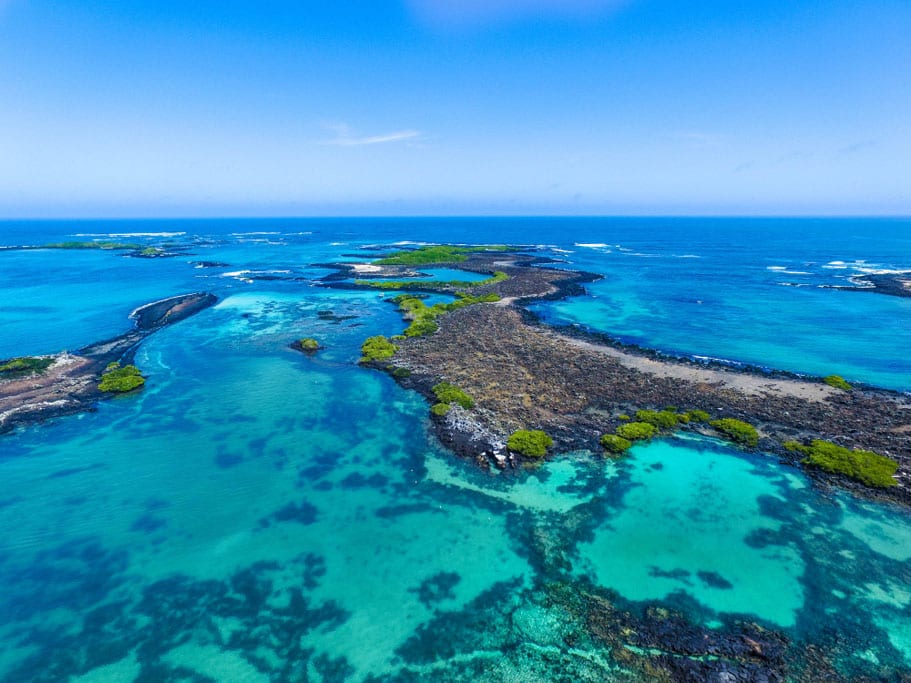
A province of Ecuador, it lies about 1000 km off its coast. The archipelago consists of 13 major islands and 7 islets.
Getting There
Flights to the Galapagos originate in Ecuador at José Joaquín de Olmedo International Airport in Guayaquil or Mariscal Sucre International Airport in Quito. Flights are either to Isla Baltra (Seymour), or San Christobel with liveaboards departing from both islands.
For thousands of years, the Galapagos Islands were completely cut off from the rest of the world, and the creatures that have evolved here are mainly endemic, famously studied by scientist Charles Darwin, who later developed his theory of evolution based on his discoveries made here.
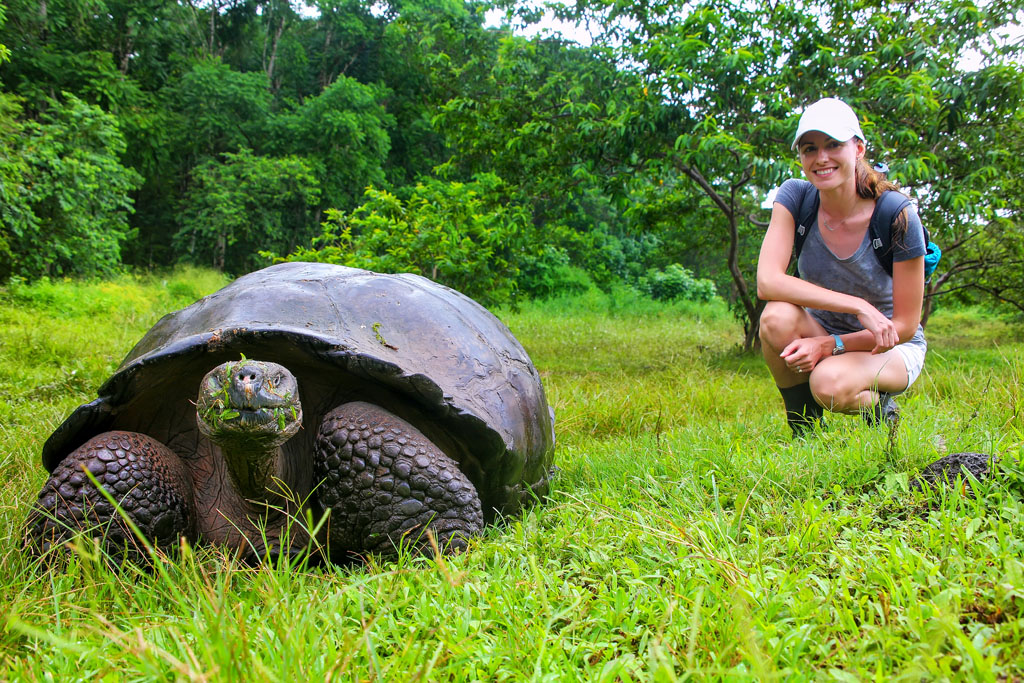
While there is no known indigenous population, there are few local residents that live on the islands, deemed a national park and biological marine reserve. Officially a part of Ecuador, the islanders are mainly Spanish speaking.
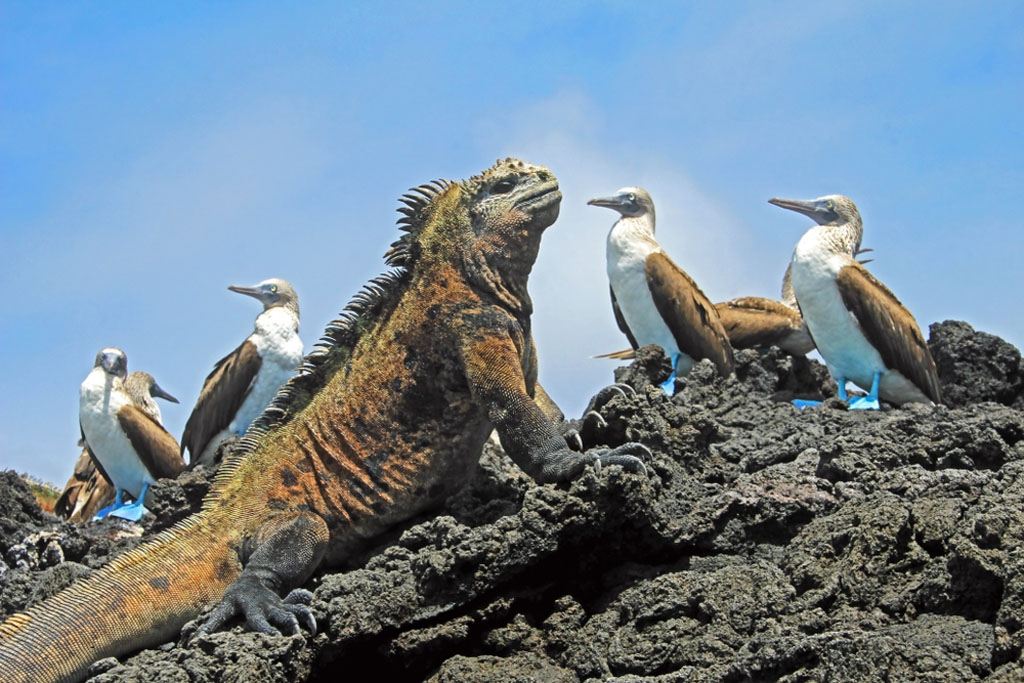
Galapagos Weather
The climate and conditions here are affected by three ocean currents. Islands to the south west are largely affected by the Humbolt and Cromwell currents, especially during July to October, when the water temperature can get as low as 13 degrees Celsius. It’s here you are more likely to see cold-water creatures such as penguins, dolphins and seals.
The warm El Nino current comes from the equator from the north east affecting the waters surrounding the eastern side of the archipelago including Santa Cruz and San Christobel and between December and April the water can reach temperatures of 28 degrees Celsius.
Galapagos Dry Season
The dry season in Galápagos, known as the garúa season, is when temperatures begin to drop, from June to December.
- As cold waters travel north from Antarctica, the climate becomes more subtropical than tropical.
- One of the most visible effects of the subtropical climate is the misty rain that coats the island peaks and turns the vegetation green. Garúa translates to “drizzle” in English, so a fitting name for the misty season.
- The garúa season attracts more marine mammals, fish, and birds despite the colder waters because the Humboldt Current brings up nutrient and plankton rich water. The sea is swarming with fishes, and so it’s one of the best times to observe seabirds and Galápagos penguins who are enjoying the feast swimming below the surface.
Galapagos Rainy Season
The rainy season extends from January to May, with water and weather is at its warmest during these months.
- Tropical showers are at their heaviest between January and March, but storms are generally short.
- Predominately sunny days and warmer waters make for great snorkelling weather.
- While the weather is at its clearest and the water at its smoothest from March to April, there are less fish to see in the warm waters.
A detailed breakdown of monthly weather and wildlife events can be found here.
Power: 120V, plug type A & B
Currency: US dollar
Calling code is +0115935
How to Get Around
A wide range of naturalist guided walking tours is available for visitors to see the endemic wildlife on the islands, which are strictly regulated to maintain sufficient protection of this unique national park.
Other Activities
The islands are of course famous for the unique endemic wildlife found here, especially the giant Galapagos Tortoises, marine iguanas and blue footed boobies which are easily discovered and approached on the islands’ interiors.
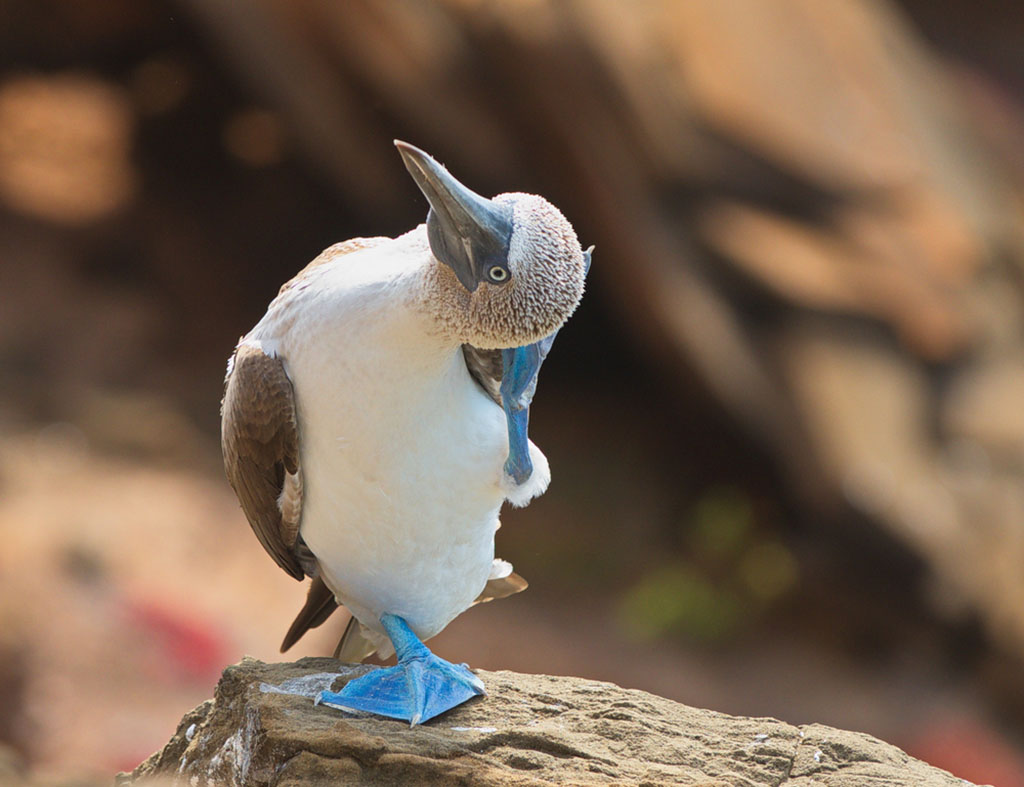
El Arco, Darwin Island – appears on most lists of the world’s top 10 dive sites. There are regular encounters with schooling hammerheads, whale sharks and spotted eagle rays as well as Galapagos and silky sharks. It’s accessible only by liveaboard.
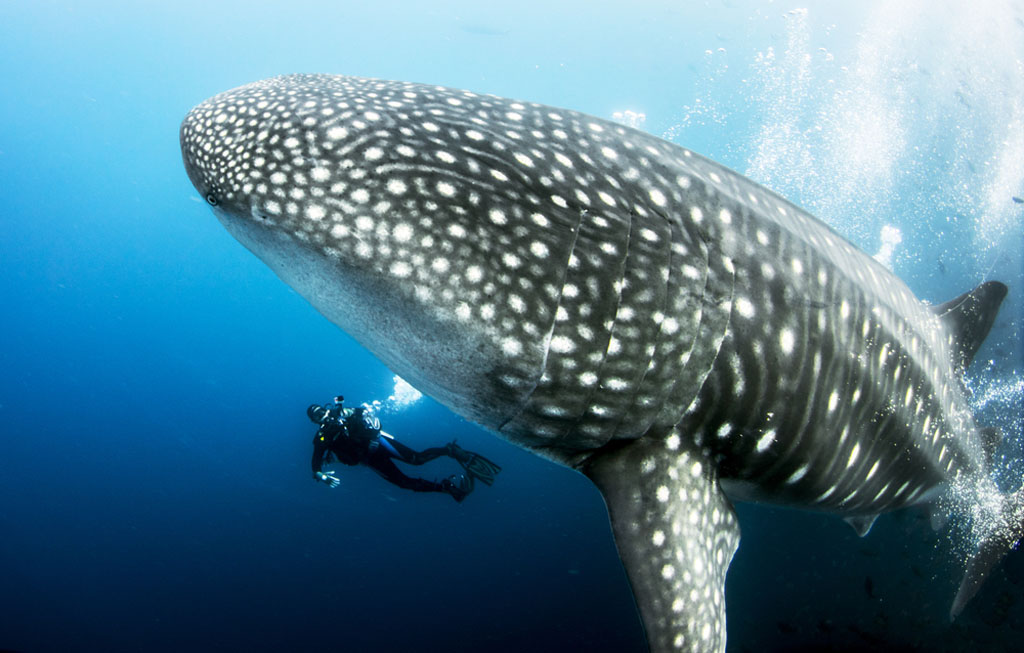
El Arenal, Darwin Island – sloping off the distinctive stone arch above water, this dive site is teeming with life, big-eye jacks along with hammerhead, blacktip and whale sharks all frequent the area.
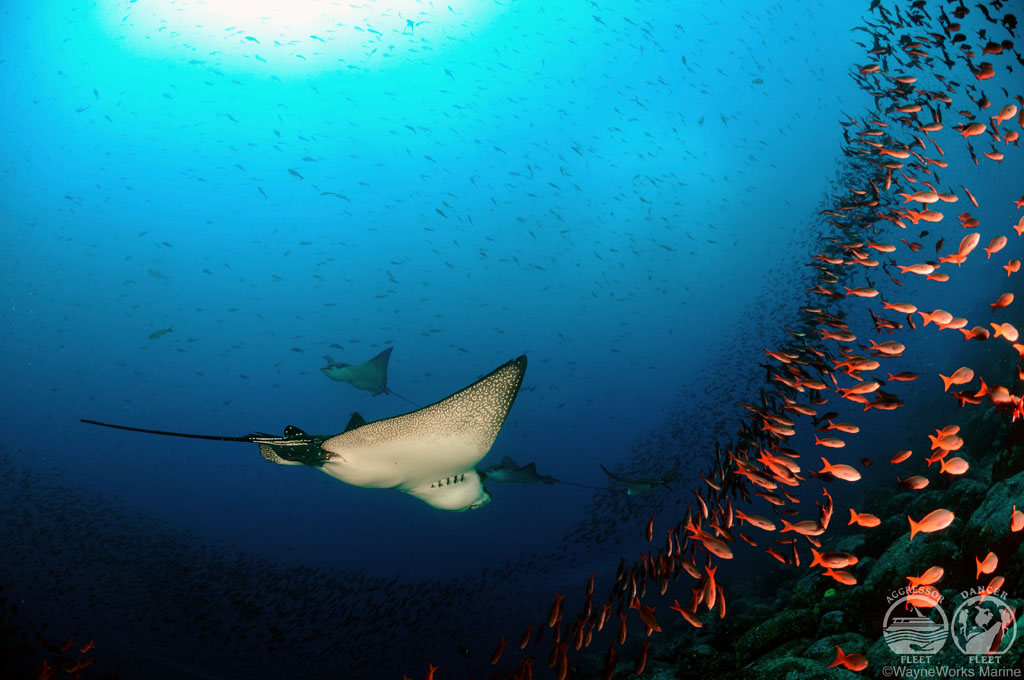
Roca Redonda, Isabela Island – off the north coast of Isabela, this dive site is the tip of an underwater volcano that rises from the sea floor where you’ll likely see Galapagos sharks, hammerheads and barracudas, and in the shallows you may be joined by a few inquisitive sea lions.
Cape Douglas, Fernandina Island – done as a drift dive, this is a great spot to watch penguins “fly” past. You can also see fur seals and Galapagos sea lions mingling with munching marine iguanas.
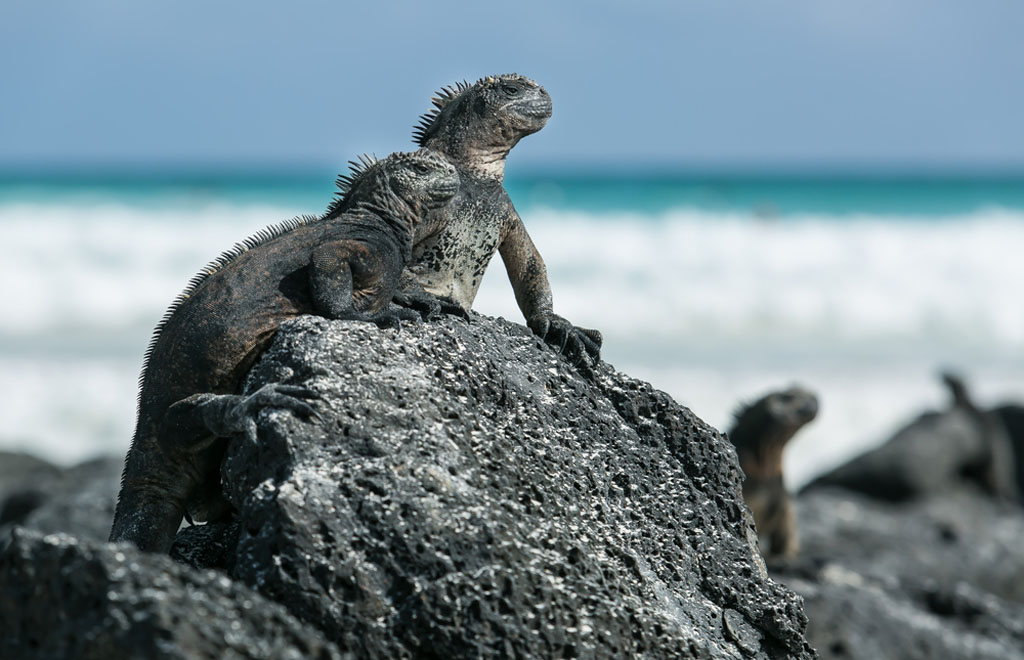
Pitt Point, San Cristobal Island – an exposed rock at the most north-easterly point of the island where you’ll likely see schools of snapper and jacks. You may also see diving boobies while underwater.
Camaño Islet, Santa Cruz Island – outside Academy Bay at this calm site you’ll find groupers, batfish, sea horses, sea lions, sharks, and if you’re lucky, marine iguanas as they dive beneath the waves in search of food.
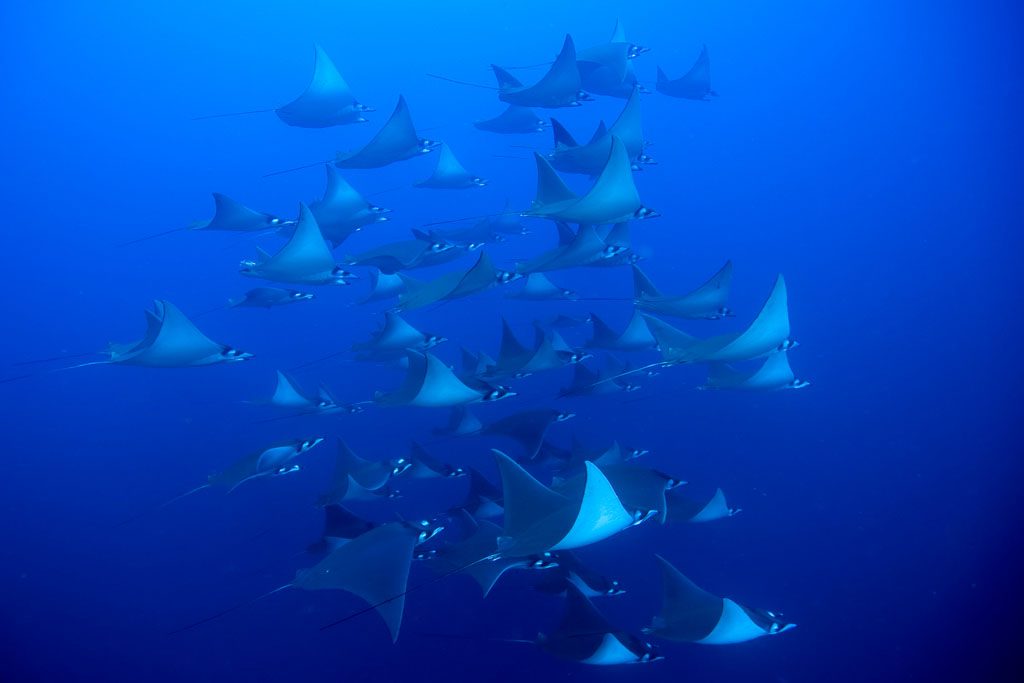
While most shark species, dolphins and seals are there year-round, the best time of year to see whale sharks is between August and October, and the best time to see rays is December to April.
Best Time to Dive Galapagos.
This fantastic infographic from Intrepid Travel details the weather, water temperature and wildlife events throughout the year.




